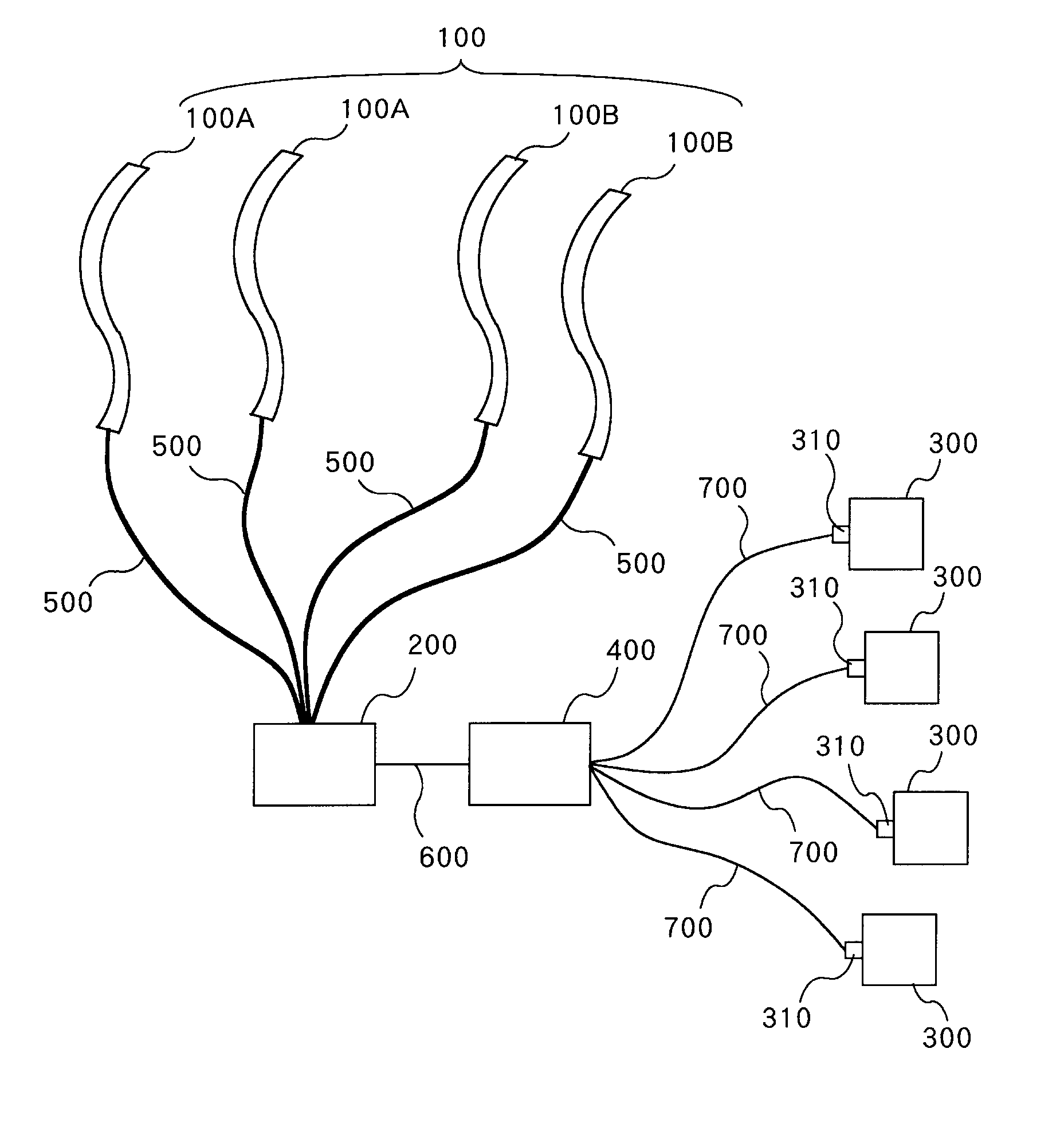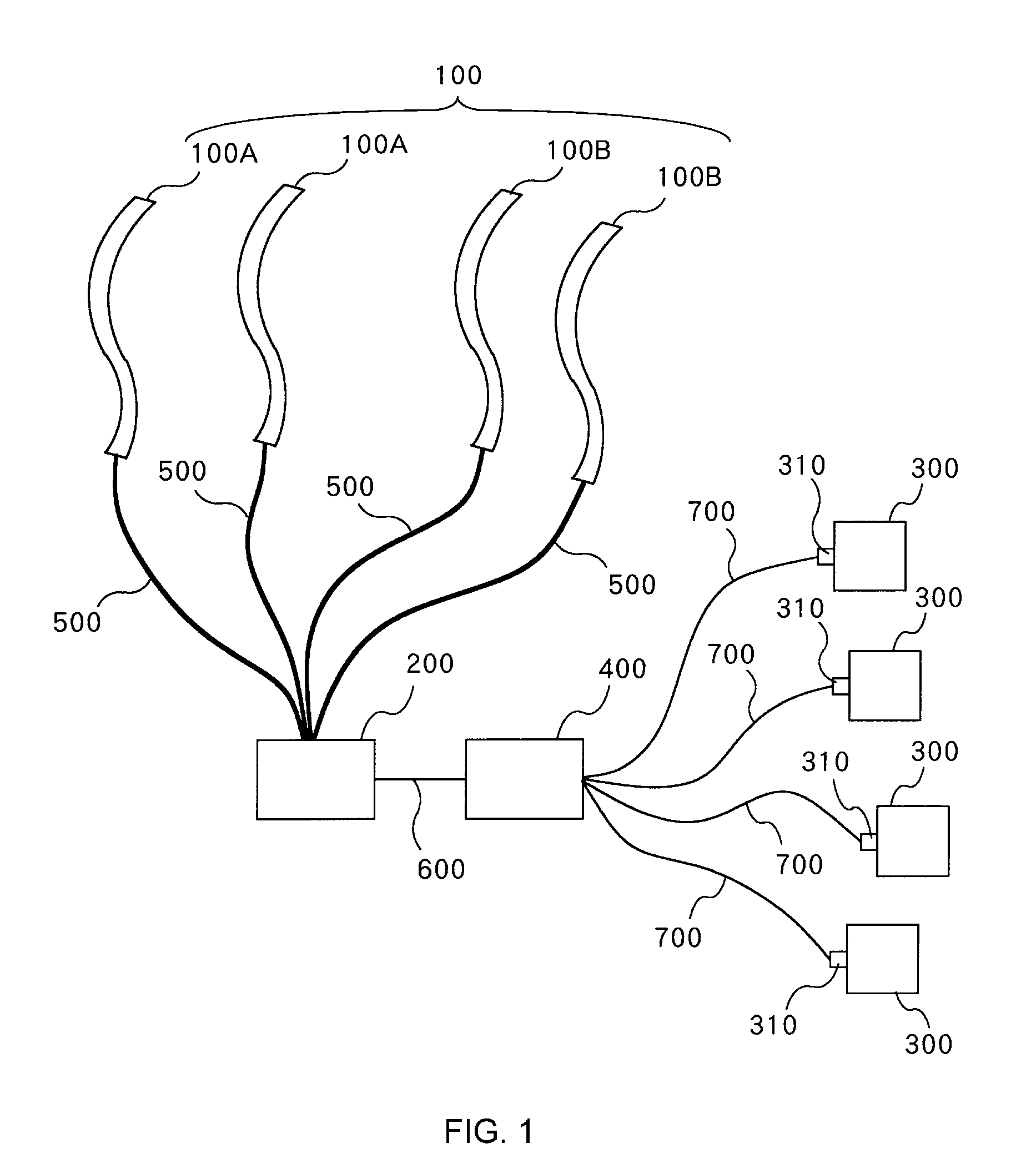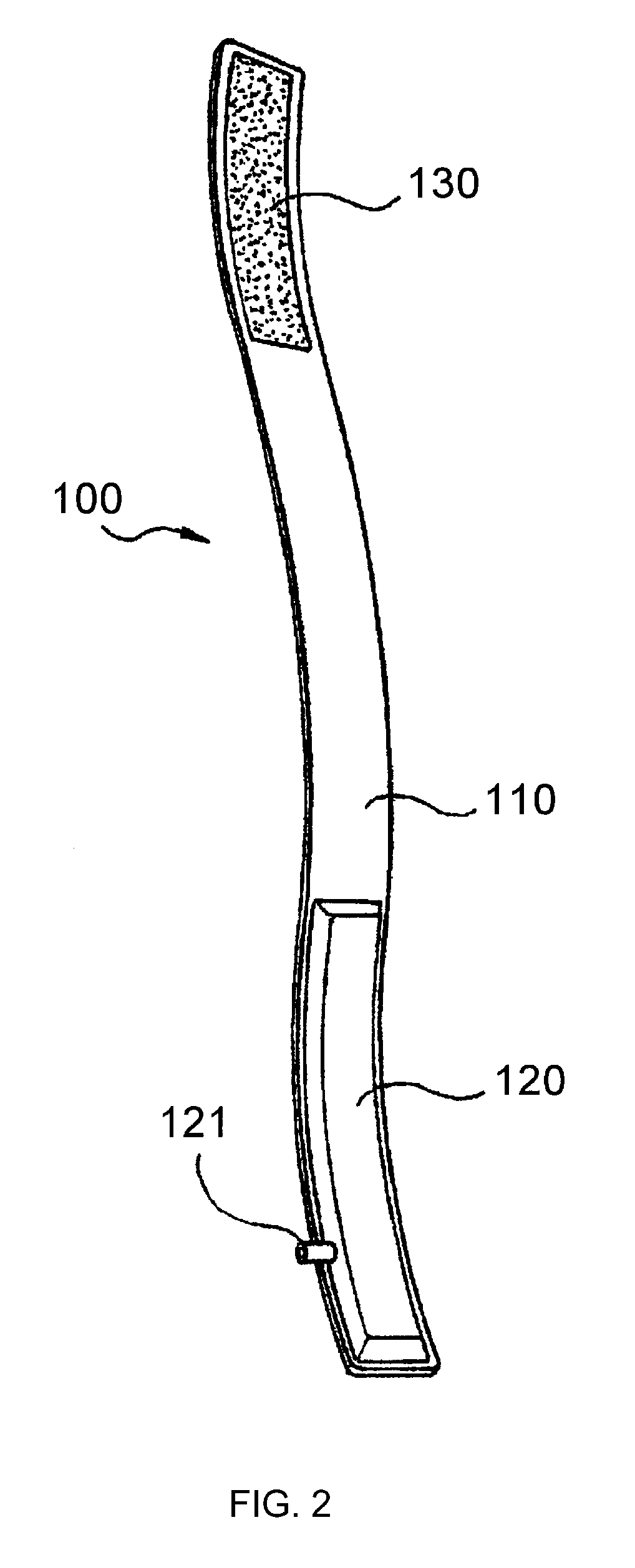Training apparatus, control segment for training, and control method
a technology for training apparatus and control segment, applied in gymnastics, angiography, catheters, etc., can solve the problems of increasing the burden on muscles and joints, slow-twitch muscle fibers are limited in their potential for growth, and fast-twitch muscle fibers require a significant amount of exercises, so as to reduce the amount of blood flowing, improve the effect of outcom
- Summary
- Abstract
- Description
- Claims
- Application Information
AI Technical Summary
Benefits of technology
Problems solved by technology
Method used
Image
Examples
first embodiment
[0089]FIG. 1 is a view schematically showing the entire configuration of a training apparatus according to an embodiment of the present invention.
[0090]As shown in FIG. 1, the training apparatus according to this embodiment comprises a tight fitting band 100, a main device 200, a measuring segment 300, and a control segment 400. In this embodiment, although the main device 200 is described as a separate component from the control segment 400, they can be integrated to each other as a single component.
[0091]The tight fitting band 100 in this embodiment is configured as shown in FIGS. 2, 3, and 4. FIG. 2 is a perspective view showing an embodiment of the tight fitting band 100. FIGS. 3 and 4 are views illustrating how the tight fitting device 100 is used.
[0092]The tight fitting band 100 in this embodiment comprises a plurality of, more specifically, four members as shown in FIG. 1. The reason why there are four tight fitting bands 100 is to allow compression of the arms and legs of a ...
second embodiment
[0179]The training apparatus according to the second embodiment is basically identical to the one in the first embodiment. In particular, the training apparatus according to the second embodiment is identical to the one in the first embodiment in terms of the hardware configuration described with reference to FIGS. 1 to 6 in the first embodiment.
[0180]In addition, the training apparatus according to the second embodiment is also identical to the one in the first embodiment in terms of the functional block shown in FIG. 7. However, the functions of the main control unit 412 and the pulse wave analyzing unit 413 that are provided when the automatic mode is chosen in the second embodiment are slightly different from those provided when the automatic mode is chosen in the first embodiment. In addition, the second embodiment is different from the first embodiment in terms of the information entered by using the input device when the automatic mode is chosen, as well as the information wh...
PUM
 Login to View More
Login to View More Abstract
Description
Claims
Application Information
 Login to View More
Login to View More - R&D
- Intellectual Property
- Life Sciences
- Materials
- Tech Scout
- Unparalleled Data Quality
- Higher Quality Content
- 60% Fewer Hallucinations
Browse by: Latest US Patents, China's latest patents, Technical Efficacy Thesaurus, Application Domain, Technology Topic, Popular Technical Reports.
© 2025 PatSnap. All rights reserved.Legal|Privacy policy|Modern Slavery Act Transparency Statement|Sitemap|About US| Contact US: help@patsnap.com



